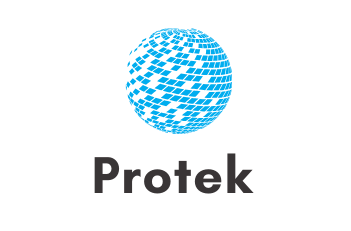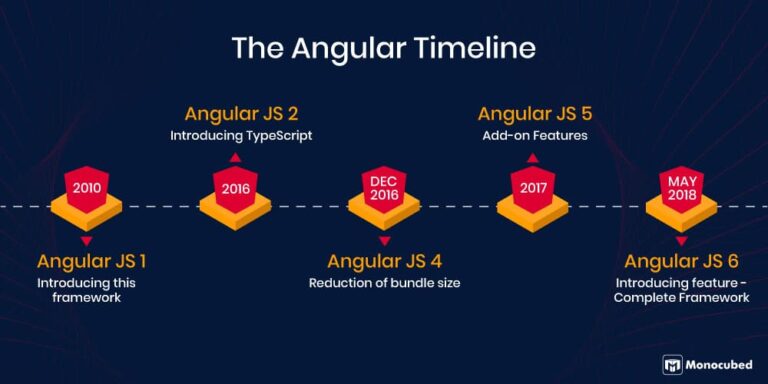Functional programming vs OOP
Traditional programming languages, along with C, FORTRAN, Pascall, are primarily based totally on procedural programming. This programming paradigm makes use of process calls, in which every process (e.g. feature or subroutine) is a fixed of computational steps to follow. It is available and smooth to understand, however while code receives longer or greater complicated, making modifications to at least one feature can motive a cascade of insects that may be a headache to hint back. To keep away from this spaghetti code, pc architects formulated distinctly more moderen programming paradigms: item-orientated programming (OOP) and useful programming.
Each paradigm takes a totally special method to how code is structured. In this article, we’ll wreck down what precisely every programming paradigm is and what it’s commonly used for. Hopefully through the stop you’ll have began out to shape a few reviews of your personal. Let’s get began out!
We’ll cover:
What is useful programming?
What is item-orientated programming?
When to apply OOP or useful programming
Wrapping up and subsequent steps
What is useful programming?
Functional programming is focused round constructing software program composed of features, just like procedural programming; however, there are diffused variations. We spotlight those variations through discussing key standards of useful programming below.
First-magnificence citizens
Functions are handled as primitives. Primitives function the only factors of a programming language. Thus, a feature may be:
saved in a variable
exceeded as an argument
back from a feature
Since they have got those capabilities, features are cited as quality citizens. The time period quality citizen basically notates an detail that helps all different commonly to be had operations.
Pure features
A aim of useful programming is to jot down natural features on every occasion possible.
A natural feature does now no longer alternate the worldwide country of this system and consequently is stated to have no aspect effects. Instead, its go back price is only primarily based totally on its enter parameters.
Pure features allow severa compiler optimizations, main to seriously decreasing a software’s execution time. Furthermore, natural features are perfectly suited for unit testing. We can unit-check a natural feature in isolation while not having to fear approximately in which withinside the code it’ll be used.
Higher-order features and recursion
Instead of iterative loop constructs, along with for and while, in useful programming, we use higher-order features and tail calls for a recursive loop.
A higher-order feature takes a feature as its enter, plays an operation at the enter feature, and finally returns a feature.
A tail name refers to a feature name on the stop of a feature. A tail name may also bring about a recursive loop while a feature calls itself. Many compilers perform tail name optimization (a.k.a. tail name elimination) making recursion as speedy as iterative loops.
Key motives for who prefer recursion over normal primitive loops are:
simplicity of code
avoiding mutable gadgets to make code greater robust
Immutability
Immutability is the permanence of a variable as soon as the statistics is assigned to it.
No price assigned to a variable in useful programming may be changed; the simplest manner to alternate a price is to create a brand new variable. It is immutability that permits useful programming to apply natural features. These features do now no longer mutate their inputs and rely upon not anything however the enter to reap outcomes. In this manner, useful programming is just like math. Functional programming changed into even created for an educational pc technological know-how putting thru the Haskell language.
In summation, useful programming is a declarative programming version that communicates what this system does with out specifying the waft of control. It makes use of natural features, immutable variables, and tail-name recursion. This outcomes in code this is simpler to understand, debug, and unit-check. Furthermore, useful programming permits severa compiler optimizations for an boom in a software execution velocity and discount in reminiscence requirements.
What is item-orientated programming?
In comparison to useful programming, item-orientated programming (OOP) is an imperative paradigm. This way that the code describes how this system have to reap a bring about a step-through-step process. These statements procedurally alternate this system’s country.
The time period country, in OOP, refers to any set values plus the changes made to them over the route of this system.
Object-orientated programming businesses associated features and their variables into gadgets. In an item, features are cited as strategies and variables are cited as residences.
For example, this discern represents how OOP may also constitute a automobile as a set of residences and strategies.
The 4 pillars of item-orientated programming
A not unusualplace query you can see in interviews is to perceive the 4 pillars of OOP. The 4 pillars are encapsulation, abstraction, inheritance, and polymorphism. It is vital to understand those tenets while reading item-orientated programming as they may be all interconnected.
Encapsulation: the act of grouping associated variables and features into gadgets. The advent of an item is primarily based totally on a blueprint or template referred to as a magnificence.
Grouping features and variables permits for features to be referred to as with few to no parameters, because the variables are integrated as part of the item.
Abstraction: hiding a number of an item’s residences and strategies from out of doors observation.
Confining sure parameters and features to an item guarantees that any destiny modifications made to the abstracted contributors of a category will don’t have any effect at the relaxation of the training. Thus, making extension and development of a software simpler.
Inheritance: an item can inherit a number of the residences and strategies of some other item.
In Java, this inheritance is notated through the keyword extend. The determine magnificence from which some other magnificence is extending is referred to as a superclass or a base magnificence. For instance, the Toyotaand Ford training can be extensions of the Car magnificence. Whereas, Ford Mustang is an extension of the Ford magnificence. In this case, not unusualplace code to each Toyota and Ford may be written as soon as of their superclass Car.
Thus, inheriting present residences and strategies, and including new functions to them, reduces code redundancy and will increase reusability.
Polymorphism: way literally “many forms,” and refers to gadgets that reply in special methods to the equal feature.
Polymorphism is primarily based totally on an item’s relationships with different gadgets and the way contributors of a superclass are being prolonged in its derived training. This once more reduces redundancy and will increase reusability. Polymorphism is a complicated concept; in case you are inquisitive about gaining knowledge of greater, we inspire you to test out the route
Each pillar of OOP is vital in its personal right, however the pillars are depending on one some other. Encapsulation is a vital characteristic for abstraction and inheritance to be possible. Additionally, polymorphism can’t exist with out inheritance. Each of the 4 pillars is vital to the paradigm. OOP as an entire features thru gadgets with self-contained residences and strategies, and their relationships with different gadgets.
When to apply item-orientated or useful programming
Some programming languages simplest permit for one specific paradigm. For example, Haskell is through definition a useful programming language due to the fact its country can’t mutate. Other mainly useful programming languages consist of Lisp, F#, and Erlang. Some OOP languages, or languages that lean greater towards the item-orientated paradigm are Java, C#, and C++. Several programming languages, along with TypeScript and Python, are multi-paradigm and help each OOP and useful programming to a few capacity. These languages have sure allowances to make use of natural features, and immutable gadgets on the developer’s will.
Python is one of the maximum famous languages, and it represents a middle-floor in this spectrum of mutable to immutable or item-orientated to useful. Python has integrated kinds which might be immutable: strings, numbers, and Booleans, to call a few. Custom training in Python, however, are commonly mutable statistics. With a language like Python, it’s miles nearly completely as much as the programmer as to what paradigm they use mainly.
OOP is presently the paradigm utilized by maximum developers, typically for its accessibility. Functional programming is extremely good for the server aspect of applications, statistics manipulation, and net crawling. For example, all of Facebook’s unsolicited mail filtering changed into constructed the usage of useful programming in Haskell. For the maximum part, there may be no straight forward solution as to what paradigm will serve you high-quality for your software program improvement training and career. Good software program engineers use strategies and behavior that may be prescribed to each item-orientated programming and useful programming.
Even in case you mainly code in an OOP surroundings it may gain you to enforce a few useful programming constraints. In doing so, you can discover that your code is clearer and simpler to debug. One of the largest obstacles to creating an effective, smooth-to-use API is repetitive code, so gaining knowledge of and practising useful programming standards now may also pay dividends withinside the destiny.
When finding out what paradigm to broaden a brand new software in, it may be useful to create a roadmap for a way this system may also alternate withinside the destiny. If your software has a fixed wide variety of operations to be accomplished on entities, and you would like to develop the software through including greater entities, an item-orientated method makes the maximum sense. If instead, you’ve got got a hard and fast wide variety of entities and intend to feature greater operations, useful programming will create fewer troubles for the duration of scaling.
Wrapping up and subsequent steps
At its only, useful programming makes use of immutable statistics to inform this system precisely what to do. Object-orientated programming tells this system a way to reap outcomes thru gadgets changing this system’s country. Both paradigms may be used to create fashionable code. From an OOP attitude you will be sculpting some thing out of clay, modeling it after the actual world. Through useful programming it greater intently resembles stacking constructing blocks collectively to ultimately create a cohesive piece.



